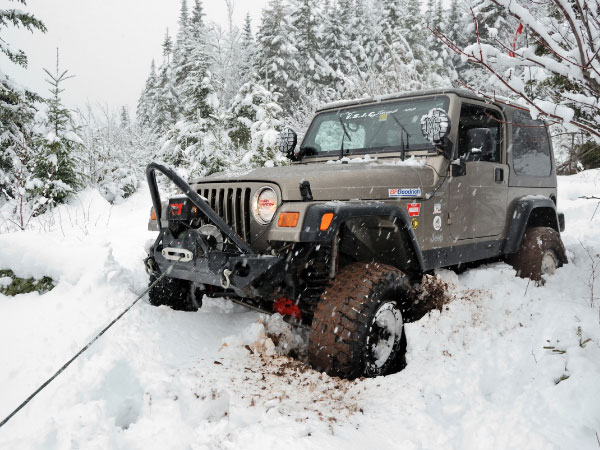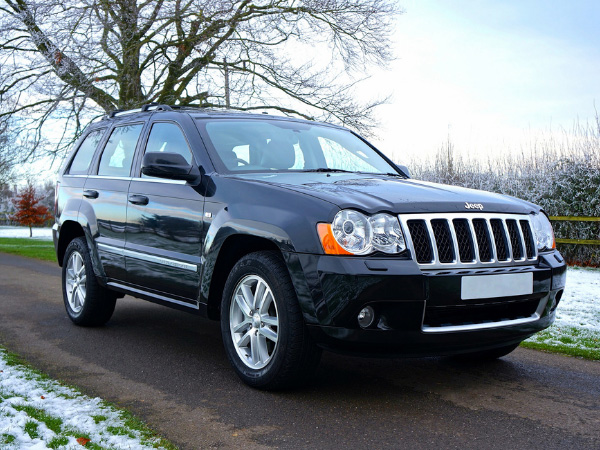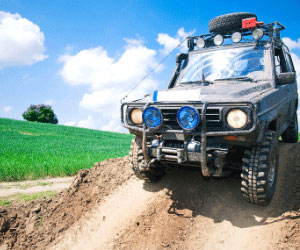The majority of Jeep Cherokee vehicles come as a front-wheel drive vehicle and they offer an upgrade to a 4-wheel drive machine.
The four-wheel drive option allows you to drive the vehicle over a wide range of terrains.
How you put the Jeep Cherokee in 4-wheel drive is a frequently asked question. Some people may remember the early days of four-wheel drive vehicles when you had to shift the vehicle into that mode using a special shifter. Besides this, if you need a steering stabilizer for your Jeep, you can read our complete review.
Today things have changed a lot so getting a Jeep Cherokee into 4 wd mode is easier than ever before.
Older Four-Wheel Drive Systems
When the older models of the Jeep Cherokee were developed switching from two-wheel drive to four-wheel drive was done by manually shifting.
The vehicle would have to be stopped and then the driver could make the shift to four-wheel drive Hi or four-wheel drive Lo depending on the terrain they were crossing.
The older systems required the vehicle to be at a complete stop before the change over could occur. The transmission had to be in a park or neutral during the switch from two-wheel drive to four-wheel drive.
To get the older Jeep four-wheel drive engaged, you had to get out of the vehicle. You did shift the vehicle into four-wheel capacity from inside but had to get out and turn a handle designed into the axle.
When you turned that handle, you locked the hubs in place. You had to lock in the hubs on both the passenger and the driver’s side of the vehicle. Technology has surely made improvements to this system.
Today the 4 wd can be shifted while the vehicle is in motion. A press of a button allows the newer systems to make the changes needed, so you do not take the chance of getting stuck because you stopped your momentum.
2011 Advancements

Before 2011 a large number of the Jeep Cherokee trim levels were sold as 2-wheel drive and the customer had to pay extra to get the 4-wd option.
The majority of people who were purchasing a Jeep wanted a four-wheel drive, and in 2011 the manufacturer decided it was time to make a four-wheel drive a standard feature on the Jeep Wranglers.
The Jeep Grand Cherokee is always in four-wheel drive mode.
Manual manipulation of the four-wheel drive feature is not required. The onboard computer has sensors that tell it when the vehicle needs increased traction and automatically switches over. You can switch these all-of-the-time systems into either four-wheel drive Hi or four-wheel drive LO.
The switchover is done using a push button. You select the four-wheel drive mode that you need according to the terrain and weather conditions. Then you depress the button and let the computer make the changes.
You do not have to stop driving, slow down, or make any manual changes before you make this transition as long as your speed is about 60 mph.
How to Know When to Use Four-wheel drive Hi and Lo

When you shift a Jeep Cherokee into a four-wheel drive Hi or a four-wheel drive LO, the vehicle will be more capable of covering specific road conditions.
- Use the four-wheel drive HI button when the road you are traveling is very slippery
- When you are traveling across normal highway pavement, you can drive in HI
- When you are trying to get out of a muddy situation, the HI button needs to be pushed.
- When you are covering icy or snowy terrain, use the HI
Four-Wheel Drive LO
The LO refers to lowering the gear ratio. LO should not be selected if the vehicle is traveling at a speed greater than 10 MPH. This option is designed to help a slow-moving vehicle get across the terrain safely.
Rock crawling is one of the distinctive driving scenarios that are going to have you switching your Jeep Cherokee into a four-wheel drive LO. You may find that your vehicle will not make the transition into the four-wheel drive LO until the vehicle is stopped. This is a safety feature to prevent damage to the vehicle during the transition.
Four=Wheel Drive LO Increases the Torque
- When you are towing something heavy, use the LO option
- When you are driving up a steep incline, you need to switch to the four-wheel drive LO option
- When you are going down a steep hill and need to control speed to be safe, use the LO option
The Advantages and Disadvantages of Jeep Cherokee 4-Wheel Drive
Before you get excited about having a Jeep and putting that Jeep Cherokee into a four-wheel drive, you need to really understand both the advantages and disadvantages of this drivetrain.
How It Works
Once you engage the four-wheel drive, the engine transfers power to the transmission. The transmission spreads the power out between the four wheels of the vehicle. This provides equal traction abilities, so the vehicle does not sit there and spin its wheels like a two-wheel drive truck that is stuck in a big mud hole.
Advantages of Four-Wheel Drive
- It allows people who drive on off-road terrains to be a success
- It allows the vehicle to have more traction when it is traveling over treacherous terrain
- It has more weight and makes road driving safer and easier
Disadvantages of 4-Wheel Drive
- It costs more to buy a four-wheel drive than a two-wheel drive vehicle
- The tires wear out on four-wheel drive vehicles faster
- The automobiles that are four-wheel drive consume more fuel than the lighter two-wheel drive machines
- The vehicles are heavier, and it takes more time and space to get them to stop completely
- Avoiding a collision is more difficult because of the added weight and added length it takes to stop the vehicle
- People often get too confident about what their four-wheel drive can do for them and they choose to get into more difficult situations that may be more dangerous
Tricks of Driving a Four=Wheel Drive
- To make your 4×4 jeep Cherokee last as long as possible, you must use the 4-wheel drive feature. When the system is not regularly used, the seals can dry and begin to disintegrate. Experts say to keep your 4-wheel drive system properly functioning and keep the seals properly lubricated; you should engage the system at least once every sixty days.
- Save as much fuel as you can by only using the 4-wheel drive system when it is really needed. Do not engage the system just because you are traveling down a bumpy country road.
- Driving the vehicle with the four-wheel drive engaged but not needed can cause severe damage to your front axles. If you are driving on dry pavement, be sure to have the vehicle out of the four-wheel drive.
All-Wheel Drive; Is It the Same as Four-Wheel Drive?
In some ways, all-wheel drive is very similar to 4 wheel drive. All-wheel drive is designed for paved roads. Four-wheel drive is designed for adventure driving in off-road situations.
If you want the security of all of the tires to have equal traction, so it is safer to drive over slick roads, then get an all-wheel drive. If you want to drive up the side of a steep hill or across rocky terrain, get a four-wheel drive.
It is important that the traction created to all four wheels by both of these drive systems will help you when you are traveling over slick or icy roads. The systems will not help you when you need to stop the vehicle. You will find it more difficult to come to a complete stop when driving the heavier versions.
Final Thoughts
Putting a Jeep Cherokee into a 4-wheel drive has become as easy as pressing one simple button. Some Jeep models even give you the option to select the terrain you will be traveling across. You can choose an ice mode, sand mode, mud mode, or other modes to have the ultimate power and control.

